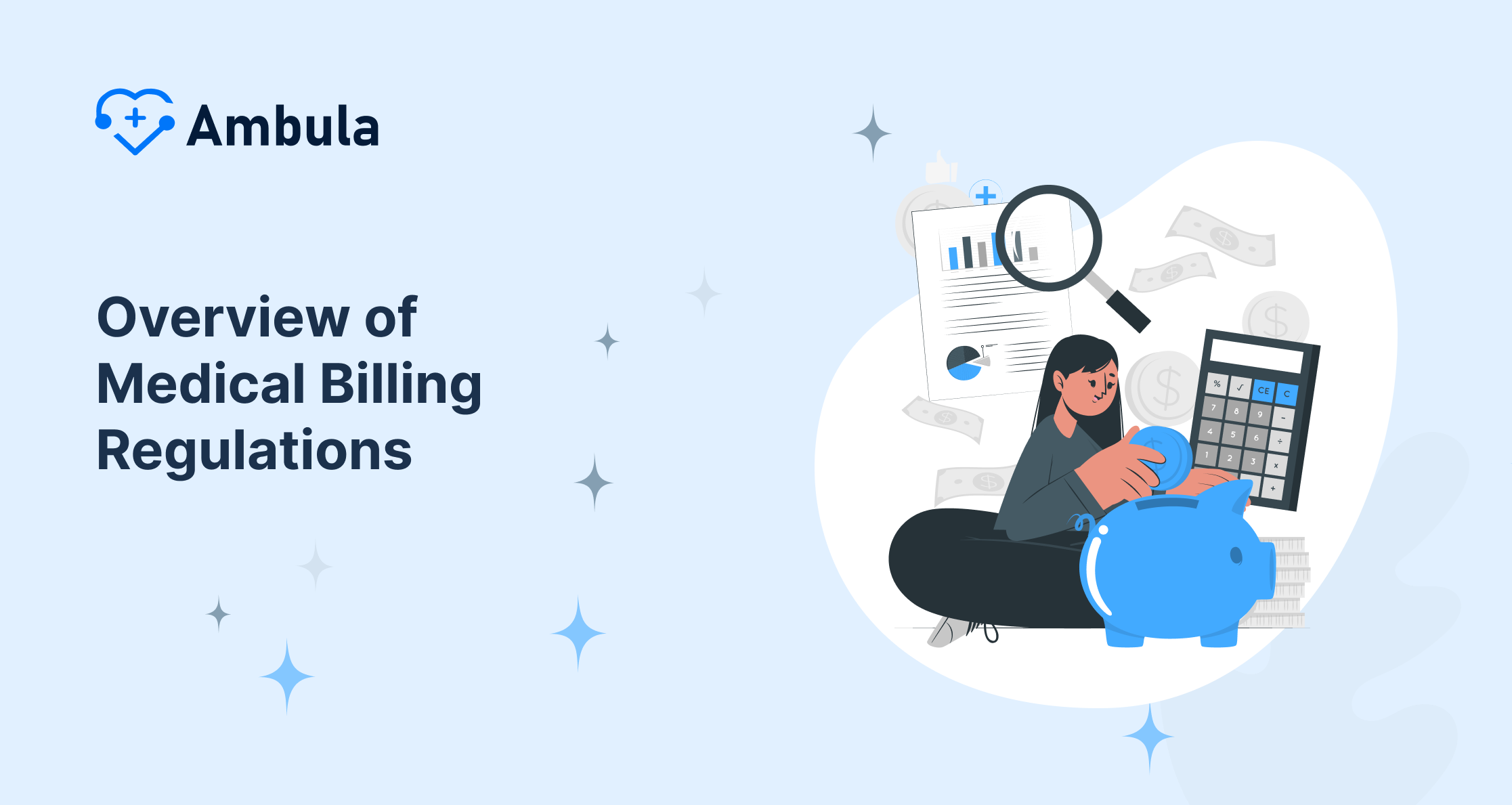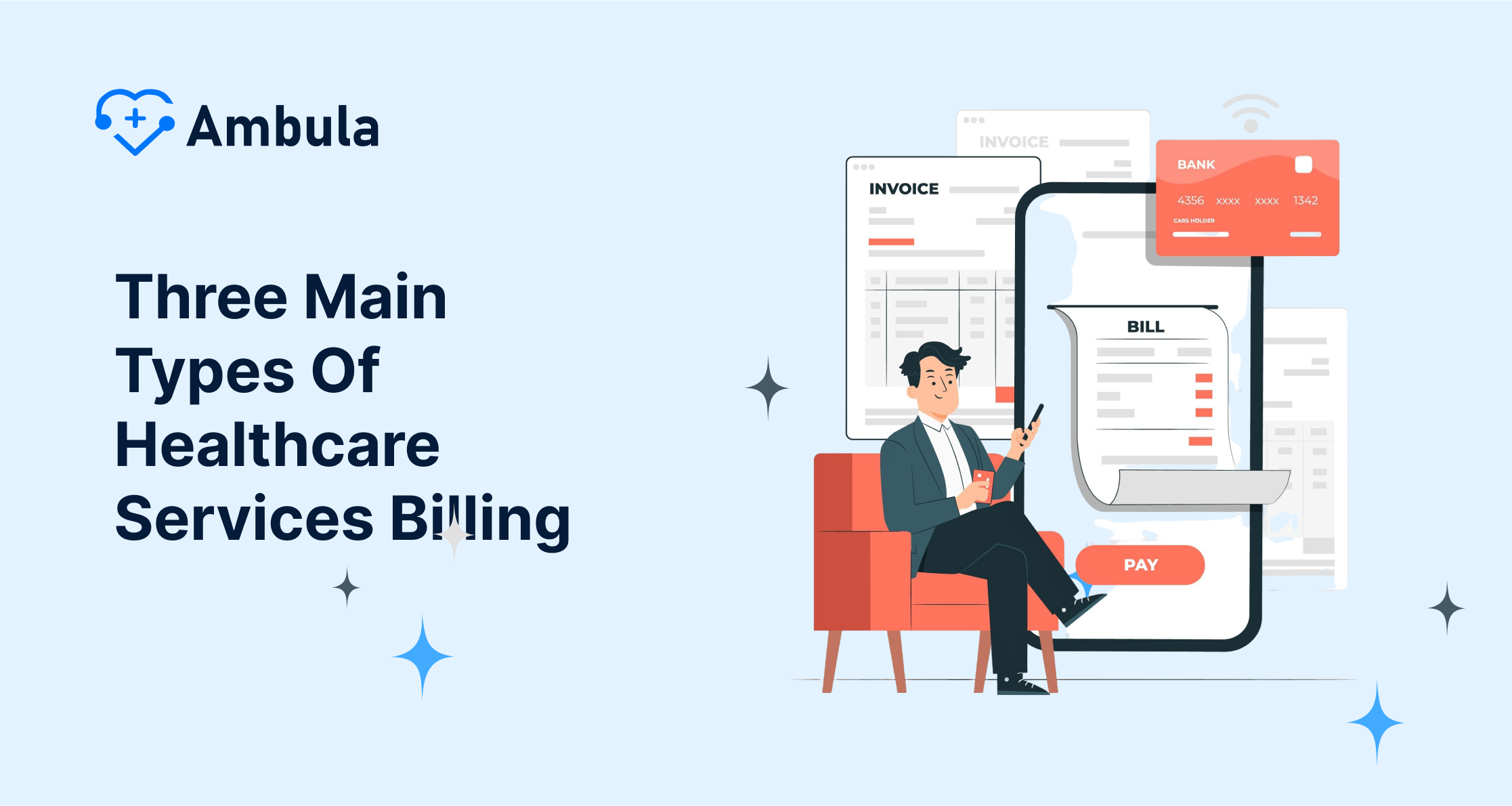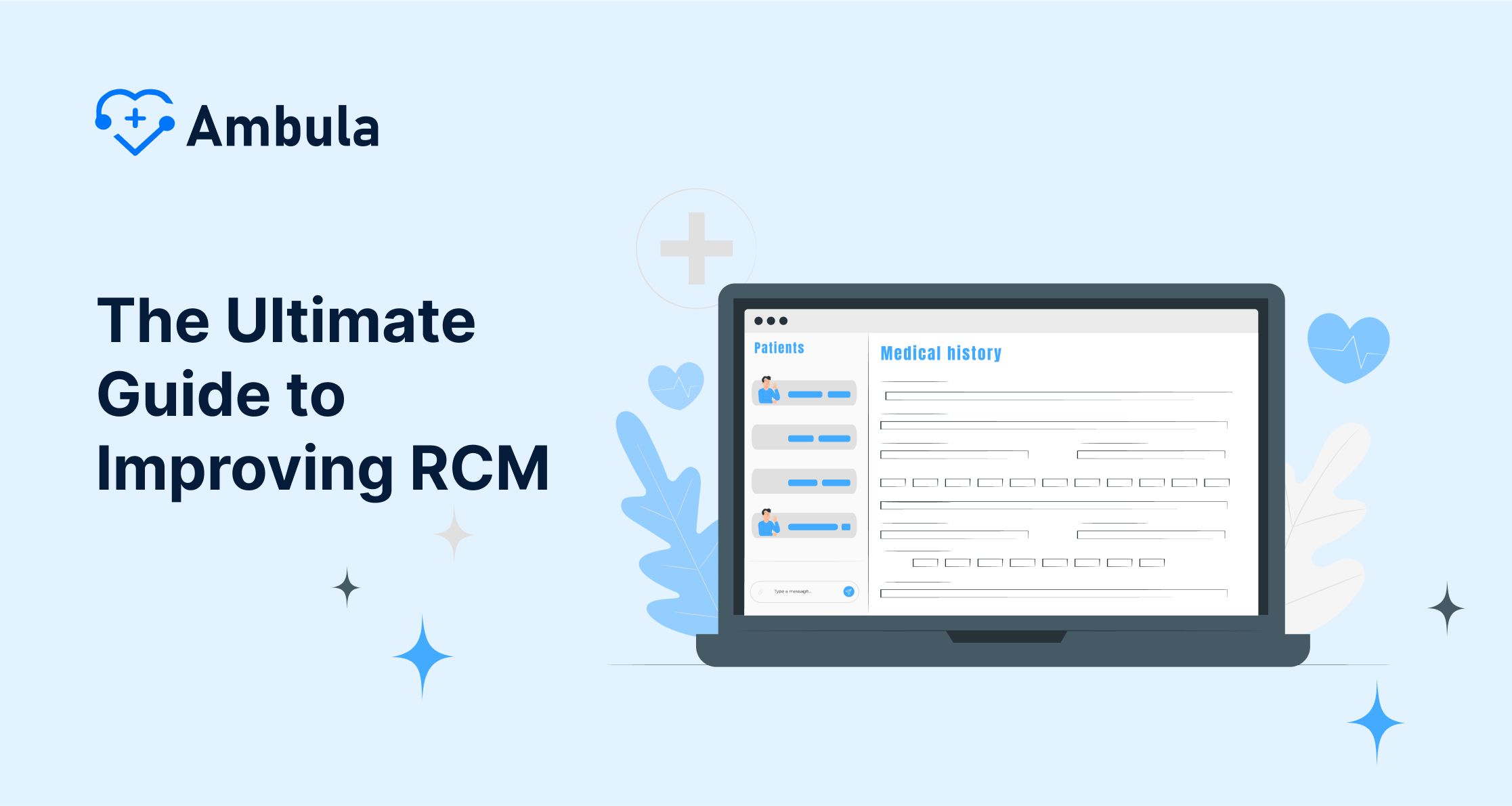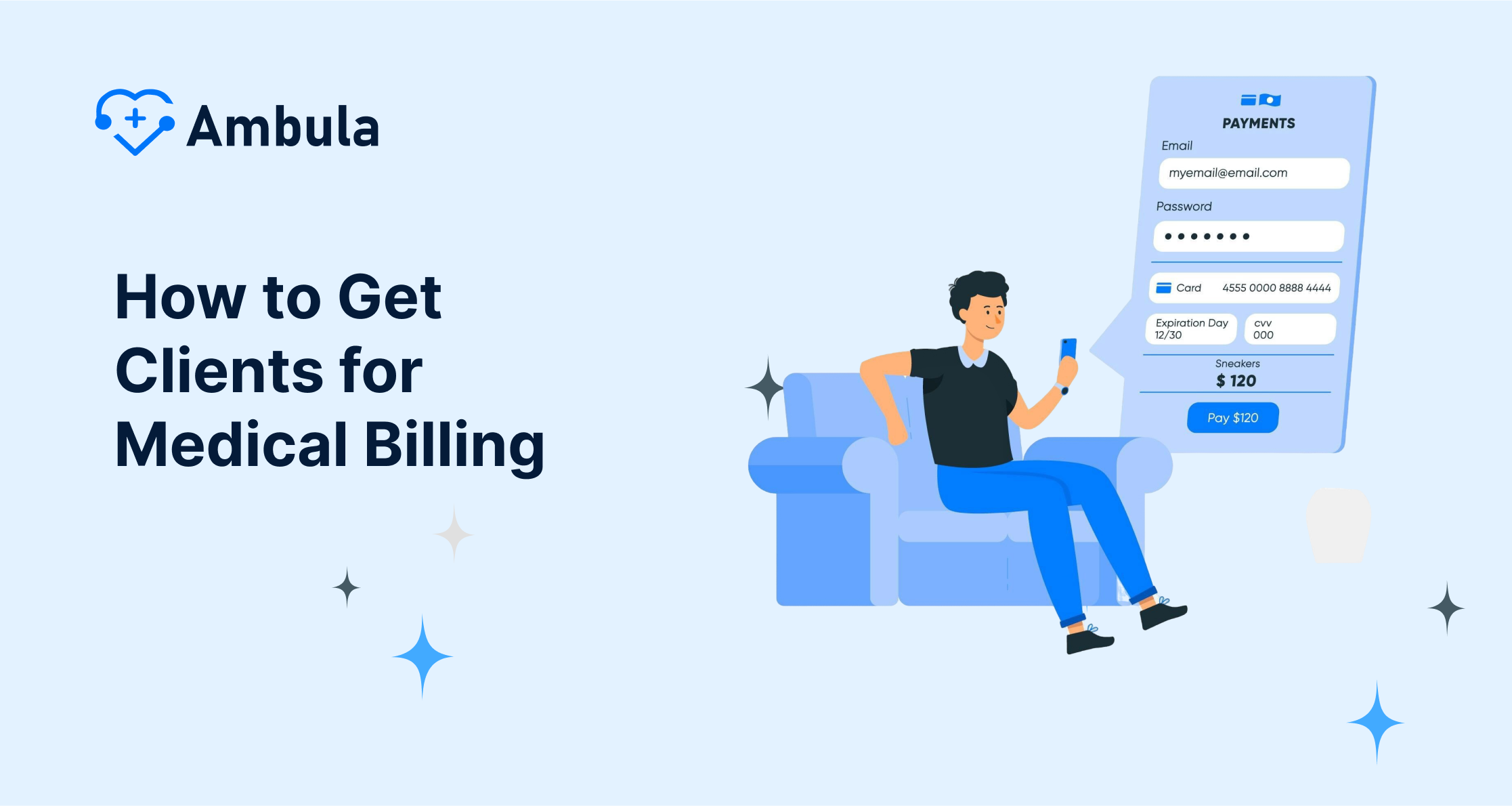
Medical billing rules have a big influence on the healthcare world. They shape how doctors, insurance companies, and patients handle money matters. These guidelines impact how medical bills work, what patients owe, and how everyone follows the law. It’s key for healthcare groups to grasp these tricky rules. This helps them get paid right, stick to the rules, and look out for patients’ rights. Understanding this complex scene is vital for success in healthcare billing.
This guide explores many parts of medical billing rules, such as the False Claims Act, HIPAA, and the No Surprises Act. It looks into coding and record-keeping needs, billing compliance checks, and digital claims handling. The article also studies how these rules impact payment in healthcare groups, covering topics like Medicare and Medicaid claims rules, care outside the network, and unexpected medical bills. By offering insights into these key areas, this guide aims to help healthcare pros understand the complex world of medical billing and coding rules.
Overview of Medical Billing Regulations
Medical billing rules have a big influence on how money moves in healthcare. These rules affect how providers bill, what patients pay, and how everyone follows the law. Getting this tricky system is key for hospitals and clinics. They need to know it to get paid right, follow the rules, and look out for patients.
Key Laws and Acts
Multiple federal and state laws control medical billing practices in the US. The Health Insurance Portability and Accountability Act (HIPAA), which became law in 1996, establishes national rules to protect patient health information and ensure fair and accurate billing. HIPAA also requires the use of standard electronic transactions, such as submitting claims, to keep patient data safe and correct.
The False Claims Act (FCA) stands as another key law that holds people or companies accountable for submitting fake claims to the government for payment. Breaking the FCA can lead to penalties up to three times the original claim amount, plus extra fines for each false claim submitted.
The Anti-Kickback Statute (AKS) makes it illegal to offer, pay, ask for, or get an y payment to encourage or reward referrals for services under federal healthcare programs. Breaking the AKS can result in both FCA liability and criminal punishments.
y payment to encourage or reward referrals for services under federal healthcare programs. Breaking the AKS can result in both FCA liability and criminal punishments.
The No Surprises Act, which started in January 2022, shields patients from unexpected out-of-network medical costs. This law makes providers give uninsured or self-pay people honest estimates of likely charges for planned health services.
Regulatory Bodies
Different regulatory agencies monitor and enforce compliance in medical billing practices. The U.S. Department of Health and Human Services (HHS) plays a key role in implementing and enforcing healthcare regulations. For example, HHS issued the final rule requiring all entities under HIPAA to use ICD-10 for medical coding.
Regulatory bodies at the state level also have an important role in overseeing medical billing practices. California, for example, has laws and regulations about medical billing. These aim to protect patients and ensure medical providers receive accurate and timely payments.
Compliance Requirements
Healthcare organizations must follow strict compliance rules to avoid fines and keep their practices ethical. Compliance in medical billing means sticking to set coding guidelines and standards. This includes using the right Current Procedural Terminology (CPT) and International Classification of Diseases (ICD) codes.
To stay compliant, healthcare organizations should set up a medical billing compliance program. This program should spell out policies and procedures to identify, report, fix, and prevent legal or ethical breaches. The program should have these parts:
- Training staff at every level to follow rules
- Keeping an eye on and checking billing and coding
- Evaluating how well clinical records are kept
- Clear steps to report and fix rule-breaking
Checking billing and coding has a big impact on finding errors before the government, insurance companies, or others do. These checks should answer questions like:
- Are all the codes for services and supplies right?
- Are the claims correct, and do you have all the needed info?
- Do claims follow state and federal rules?
- Did providers deal with denied claims?
Keep in mind that the claim denial rate has risen to about 20% in the last five years. Many medical bills go unpaid because providers don’t follow up on claim denials.
Medical practices must maintain accurate and complete records of patient encounters. These records should include medical histories, examination findings, treatment details, and other relevant information to ensure a clear and accurate picture of the patient’s health.
By following these rules and compliance standards, healthcare organizations can lower their chances of medical billing mistakes and non-compliance. This leads to better patient care and financial health.
The False Claims Act and Its Effect
The False Claims Act (FCA) is a key part of healthcare rules in the United States. It started in 1863 during the American Civil War and has grown into a strong way to fight fraud against the government in many fields, including healthcare.
FCA Basics
The FCA stops people or companies from sending fake or false claims to the government on purpose. This covers both handing in false claims and getting others to do it or making fake records to get fraudulent claims paid. The Act gives a wide meaning to “,” including actual knowledge, choosing not to know, or not caring if the information is true or false.
In healthcare, FCA breaches can happen in different ways:
- Submitting claims for medical services not provided
- Billing for a higher level of medical services than rendered
- Falsifying diagnosis codes
- Filing duplicate claims for the same procedure
- Billing for procedures that aren’t needed
Keep in mind that the FCA doesn’t require specific intent to defraud. The government sees the difference between mistaken and fraudulent claims. They know most doctors are ethical and give high-quality care with correct claim submission.
Penalties for Violations
Breaking the FCA has serious and wide-ranging effects. Money-wise, offenders must pay:
- Triple the harm done to the government
- A fine for each false claim, which grows with inflation (up to $27,018 per claim as of July 2023)
Besides losing money, healthcare providers who break the FCA might also face:
- Being barred from government programs
- Harm to their reputation, which affects how patients and partners trust them
- Possible criminal charges, including jail time
The most serious ethical result is the possible harm to patients from unneeded medical procedures or poor care due to dishonest practices 7.
Best Practices for Compliance
To lower the risk of FCA violations, healthcare organizations should put strong compliance strategies into action:
- Set up full compliance programs:
-
- Create rules and steps
- Teach workers about FCA rules
- Push for good behavior in the whole company
- Do regular in-house checks and watching:
-
- Find possible compliance gaps
- Take quick action to fix problems
- Back reporting with whistleblower safety:
-
- Build a place where people feel safe to report issues
- Add ways to report without giving names
- Keep up with FCA rule changes:
- Compliance experts need to stay up-to-date on changes in FCA rules, guidelines, and enforcement
- Build a compliance-focused environment:
-
- Encourage ethical conduct and responsibility across the company
- Leaders at all levels should stress compliance standards
By putting these best practices into action, healthcare organizations can lower their chances of breaking FCA rules and build a workplace that puts ethical behavior and patient care first. It’s essential for everyone in healthcare to get why following the FCA matters and to take their job of protecting the healthcare system’s integrity .
HIPAA and Handling Medical Bills
The Health Insurance Portability and Accountability Act, or HIPAA for short, is super important when it comes to medical billing and keeping patient details safe. This act includes a bunch of rules and stuff that folks in healthcare like doctors, insurance people, and their business partners gotta stick to. Doing this makes sure that private health info, which the pros call PHI stays under wraps and secure.
Rules About Keeping Things Private
The Privacy Rule under HIPAA sets up countrywide rules to keep people’s medical records and other health details safe. It covers all types of PHI – that’s stuff like your health info, no matter if it’s on a computer, on paper, or spoken out loud. Under this rule, places that handle PHI gotta have ways to make sure certain people can see this kind of info. They also gotta teach their staff how to take care of it and keep it under wraps.
Folks have particular rights over their health info because of the Privacy Rule. They get to call the shots on those who see their personal health details.
- Patients hold the power to access and grab a copy of their medical records.
- They possess the capacity to request changes to their health details.
- They’re entitled to get a rundown on the ways their medical information might get used and passed around.
- They’ve got the clout to say yes or no to sharing their health data for specific stuff, like ads.
- They can ask a healthcare provider to limit the sharing and use of their health info.
- They’re allowed to get their hands on a log detailing when and for what reasons their health data got distributed for certain uses.
Understanding the Privacy Rule is essential, as it restricts access to health info but still permits sharing for certain needs. Think treatment coordination, paying medical bills, and specific tasks meant to protect public health.
Security Measures
The HIPAA Security Rule implements the safeguards mentioned in the Privacy Rule. It covers both the technical and non-technical steps that the folks who are responsible (the covered entities) must take to keep electronic health information (e-PHI) safe and sound. This Rule says these entities must maintain reasonable and proper administrative, technical, and physical barriers to protect this e-PHI.
Now, let’s talk about the main stuff the Security Rule is all about:
- It’s vital to safeguard the confidentiality, integrity, and always-around access to all e-PHI that people make, get, keep, or send out.
- It’s important to recognize and defend against threats to the information’s security or integrity that you’d expect.
- It’s crucial to guard against uses or shares of info that you wouldn’t allow and would foresee.
- Making sure the team follows the rules is key.
“The Security Rule” labels “confidentiality” as making sure e-PHI stays away from folks who shouldn’t see it. “Integrity” is about keeping e-PHI untouched and unruined by those without the right to do so, and “availability” is all about e-PHI being ready for use any time legit users need it, as outlined in these resources.
To be cool with the Security Rule, entities that have to follow it gotta:
- Do a danger check as a slice of their guarding stuff process
- Put in the right safeguards to deal with the dangers they spot
- Write down the safeguards they picked and why they chose them
- Keep up security that’s steady, makes sense, and fits the bill
Deal Standards
HIPAA sets up nationwide rules for electronic dealings to make healthcare systems work better. Every HIPAA-covered group has to follow these, like health plans, bill-processing places, and doctors who do e-business.
They decided on these dealing rules:
- “ASC X12 Version 5010” rules the roost for the majority of dealings.
- For drugstore and provider dealings, “NCPDP Version D.0” is what’s up.
- If it’s Medicaid subrogation, then “NCPDP Version 3.0” is the game’s name.
Let’s chat about some major dealing standards and when you gotta stick to them:
- Health claims, including institutional, professional, and dental, go under ASC X12N 837 Version 5010 since January 1, 2012.
- Checking if you’re eligible and what benefits you can get: well, that’s ASC X12N 270/271 Version 5010, and it’s been that way since January 1, 2012.
- Wanna know the status of your claim or get a reply to your question? That’s handled by ASC X12N 276/277 Version 5010, and it’s been like this since the first day of 2012.
- Getting advice on electronic payments? You should look at the TRN Associated Trace Number, cause that’s part of ASC X12N 835 Version 5010, and yep, it kicked off on January 1, 2012.
Providers and health plans need to stick to specific content, formats, and coding for transactions. If providers send data through electronic means, they’re supposed to use accepted medical codes while ditching all the repeated and area-specific codes.
When healthcare groups follow these HIPAA norms and benchmarks, they make sure they’re on the right side of the law keeping patient details under wraps and making their billing tasks more efficient.
The No Surprises Act
On December 27, 2020, authorities signed the “No Surprises Act” into existence as a part of the ‘Consolidated Appropriations Act of 2021’. It marks an important milestone in shielding folks from bills that catch them off guard in the medical world 1. From January 1, 2022, this piece of law kicked in laying down nationwide safety measures against what you’d call “surprise billing.” Yeah, it’s that sneak attack on your wallet after getting health care, and it’s meant for people with regular health insurance.
Main Stuff to Know
So, this Act rolls out a bunch of necessary safeguards for patients:
- No more shock fees! Now, if you gotta head to the ER or use certain non-emergency services, the new rule is that even those docs and places that aren’t in your insurance network can’t send you a crazy high extra bill. And for air ambulance trips, too!
- They’re also keeping an eye on how much you gotta chip in for out-of-network care. If the No Surprises Act kicks in, you’ll have to pay as much as you would for in-network stuff. Plus, whatever you do pay will help meet your usual deductibles and max out-of-pocket costs, which is pretty neat.
- Providers and facilities owe it to folks without insurance or those paying on their own to dish out a clear estimate of what they’ll need to pony up for services and stuff, in specific situations.
- The Act throws in a federal process for sorting out cash arguments between insurers and providers over some charges that pop up when you’re outside the network.
- If a bill hits uninsured or self-pay folks with costs that are a whopping $400 more than what was guessed on the good faith estimate, they can turn to the PPDR process to figure out what they should pay.
Rollout Schedule
The No Surprises Act became law in December 2020 and kicked off starting January 1, 2022 7. The Treasury, Labor, and Health and Human Services Departments, plus the Office of Personnel Management, have been hustling to enforce and make the Act work by setting up rules and advice.
Big steps in the setup process include:
- On January 1, 2022, they activated most parts of the law. This included ending surprise bills and guarding against unfair cost-sharing. (link)
- The Departments never stopped working. They’re always trying to get all the “No Surprises Act” rules up and running.
- They’re cooking up some parts still, like explaining benefits in advance. Those bits will come out later.
What it Means for Docs and Insurance Companies
The “No Surprises Act” changed the game for docs and health insurance folks:
- “Some doctors have let us know payers are cutting the cash they give out for treatment that patients pay for themselves,” but the folks holding the money bags say they’re just tweaking things down to what’s fair because they don’t gotta cover the whole bill anymore to keep customers safe, ya know.
- “It’s kinda shaky what might happen to the medical groups that doctors belong to. A bunch of them are saying that the money handlers gave ’em a tough talk about getting booted off the team unless they agree to take less dough for their work,” if you catch my drift.
- Working with claims: Insurance companies have shared that they’re putting in the work to upgrade their systems that handle claims. These upgrades are meant to catch claims related to the “No Surprises Act.” It started off with needing a person to check things over but now, it’s pretty much all automated.
- Fixing arguments: When they set up the Independent Dispute Resolution (IDR) process, it kinda made some folks worry about how it’s built and what it might mean for how much doctors and hospitals get paid. The American Medical Association isn’t too happy—with the rules that say whatever the going rate for out-of-network services is, it should be what’s fair.
- Meeting new rules: Healthcare providers and insurance companies need to adjust to fresh rules. They have to give reliable cost predictions, keep up-to-date lists of medical professionals, and put in place tools for comparing costs.
Things You Need to Know ‘Bout Coding ‘n Stuff
The Whole ICD-10 Deal
All right, so ICD-10-CM is a big deal in the world of medical scribbling. It’s like this tag with seven quirky letters and digits that helps sort out what’s up with peeps when they go see the doctor in any healing place. The tag kicks off with three signs that tell ya the category. Then, you hit a dot and boom – more deets in the subcategory part. If that ain’t enough, you got two more bits that can spill the beans on the nitty-gritty, like where it hurts, how bad it is, or what kind of ouch or sickness it is.
The “ICD-10-CM” manual sorts itself by different injuries or sicknesses. It uses stuff like brackets and parentheses, along with “Includes,” plus two sorts of “Excludes” hints to direct the people doing the coding. Now, the “Excludes1” hint is for codes you shouldn’t use at the same time, and “Excludes2” shows you conditions that don’t fall under the present code.
In the realm of medical coding, extensions play a key role. You spot them in the last, or seventh, spot. They’re there to tell you what type of medical encounter it’s about. Sometimes, a coder’s gotta stick in an ‘X’ if they need to fill the space so that the real deal, the extension ends up where it belongs, in slot number seven. It’s all in the handbook over at 1.
Digging into those medical reports is a must for spot-on coding. Coders have to deep-dive into the A to Z list and the rows and columns of the big code book to pinpoint the exact code they need. All that detective work ensures they get it right. The proof’s in the pudding, or in this case, the codebook listed right here.
CPT and HCPCS Coding
“Current Procedural Terminology (CPT)” and “Healthcare Common Procedure Coding System (HCPCS)” play critical roles in documenting medical surgical, and diagnostic services and procedures. The HCPCS codes split into two main levels; Level I, or CPT-4, is for doctors’ services. Level II covers items, supplies, and services that CPT codes don’t.
Each year, the Centers for Medicare & Medicaid Services, or CMS for short, updates a List of CPT/HCPCS Codes. These codes pinpoint the items and services in specific categories of health services. Now, this list is super important when you wanna stay on the right side of rules like the physician self-referral bans.
Grasping the distinction between HCPCS and CPT codes is essential for precise billing, smooth conversation, data examination, and sticking to the rules. These codes play a key part in health billing, affecting the profits of those who give care and how patients’ bills turn out correctly.
Documentation to Show Medical Need
Recording medical necessity is super important. It shows why patients gotta have certain medical services or treatments. This stuff is like proof to show that all the procedures, treatments, or times you gotta stay in the hospital are legit necessary. It helps doctors and hospitals get their money from insurance folks and keeps them away from pesky audits.
Healthcare professionals gotta get down the right details in a patient’s health records to show why they need a particular medical treatment. They should jot down stuff like what’s wrong, what signs they’re showing, their past health issues, and what they’ve done for treatment before. This shows the clear tie between what’s diagnosed and why they need this exact kind of help.
Healthcare workers gotta jot down a patient’s health issue how bad their symptoms are, and why they need to stay at the hospital when they admit someone. They’ve also got to spell out why not just sending them home with a pat on the back won’t cut it, and think up other options 4.
Ok, so if healthcare folks want to ace the medical necessity paperwork test, here’s what they must do:
Make sure you jot down what’s up with the patient, both clear as day and spot-on 5. When you’re pitching a treatment or something like it, back it up with solid clinical reasons 5. And hey, if someone’s gotta stay in the hospital, don’t forget to spell out why it’s necessary.
- Make sure all the paperwork follows the rules regulatory groups and insurers put out there.
- Toss in all the important stuff about previous health issues and the stuff that doctors did before.
- Jot down what you think will happen because of the treatment and what you’re aiming for it to do.
Healthcare workers must stick to these rules to get the correct payments, stay within the law, and defend the rights of those they care for all while giving top-notch treatment.
Conclusion
In the world of health, the rules for medical billing really shake things up, molding the cash flow between those who give care, those who pay for it, and the patients themselves. We just checked out the important bits of these rules, including stuff like the False Claims Act, HIPAA, and the No Surprises Act. We took a peek at things like how to write up services and procedures, make sure billing is on the up and up, and handle claims on computers. These rules are super important for making sure hospitals and docs get paid the right way, keep following the law, and keep patient rights safe.
Healthcare organizations need to keep up with medical billing rules if they want to succeed, as the health sector keeps changing. Healthcare providers who get these rules and put them into action can get their billing right, stay out of trouble for not following the rules, and make patient care better. This guide is your first step to get through the maze of medical billing rules. It urges healthcare pros to keep gaining knowledge and adjusting as rules keep shifting.
FAQs
1. What’s in a medical billing compliance policy?
A medical billing compliance policy makes sure docs and people running the place keep their billing honest and on point. This thing has to play by the rules of big-time federal laws like HIPAA and the Affordable Care Act, no excuses.
2. How does medical billing go down, step by step?
Alright so medical billing is like this series of things that need to happen: you got patients signing up figuring out who’s gonna foot the bill for their appointment, patients coming in and heading out making sure all the coding and billing is legit, getting the bills out there watching how the insurance folks respond dropping statements or bills on patients, and dealing with the dough patients cough up or sorting out payment plans.
3. What’s the drill when it comes to medical billing in a doctor’s office?
So, in a doc’s place, they’ve got this eight-step thing for medical billing; check it out:
- First off, you’ve got patient sign-up.
- Next comes figuring out who’s footing the bill.
- Then they get down to grabbing those codes.
- Afterward, they made a thing called the Superbill.
- Now comes the part where they whip up and send off the claims.
- Step 6: you’re keeping an eye on what the payer decides.
- Then, they hit up the patients with their bills.
- , they’re all about chasing down the cash.
4. Main Types of Medical Billing Formats?
Medical billing uses two kinds: the institutional type and the professional one. Big differences exist in the ways they handle claims processing.
[1] – https://www.insurance.ca.gov/01-consumers/110-health/60-resources/NoSupriseBills.cfm[2] – https://online.law.pitt.edu/blog/breakdown-health-care-billing-compliance[3] – https://pmninc.biz/medical-billing-laws-in-california/[4] – https://www.cms.gov/medicare/coding-billing/icd-10-codes/statute-regulations





